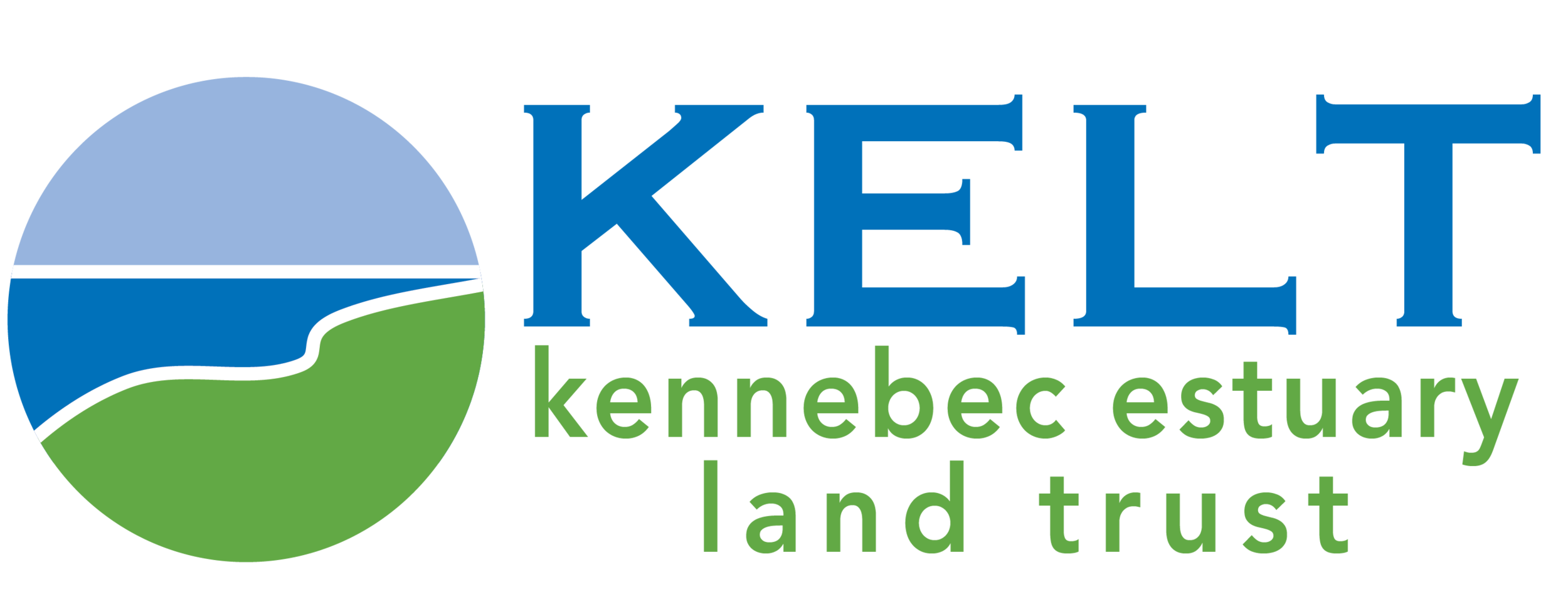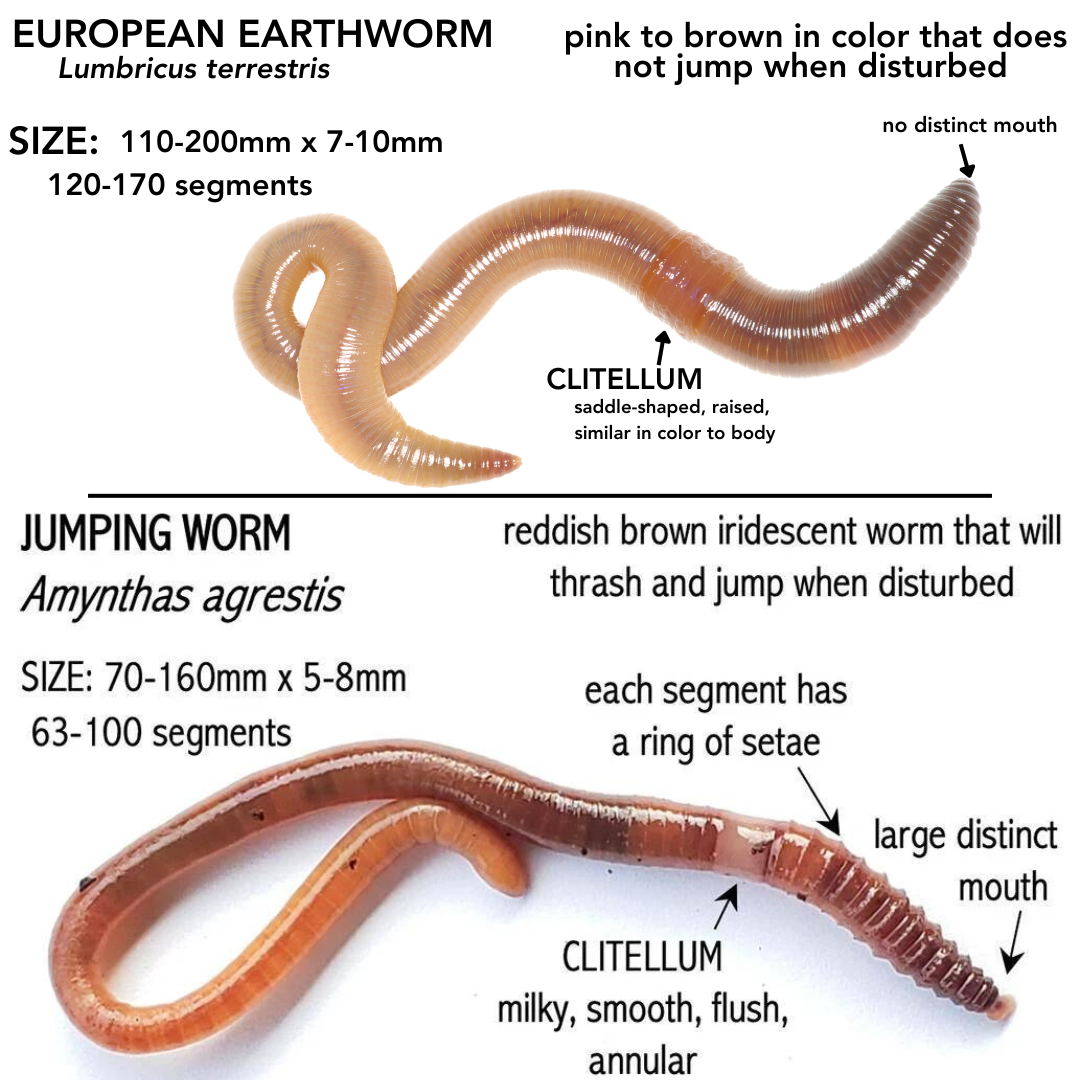Early Season Closure at LOCAL Garden: Invasive Jumping Worms Found
Last month an invasive species of worm known as the jumping worm (genus Amynthas) was found in the LOCAL Garden, a community garden managed by KELT staff and volunteers since 2016 for agricultural education and the production of local produce for donation.
Although these worms present no risk to humans who may consume any of the produce from the garden, they significantly degrade soil quality and present challenges for the long-term sustainability of gardens, farms, orchards and forests. Led by the longtime Garden Coordinator Laurie Burhoe, the decision was made to immediately close the garden to the public to help prevent the spread of these destructive worms to other areas in the community. Working under the guidance of various state officials and other agriculture-based organizations that are studying or have been affected by these worms, KELT is coordinating a management plan with the goal to stop the spread of worms from the LOCAL Garden. Read on to learn more about these invasive pests and KELT’s plan to ensure that the garden can continue to sustainably serve the community for years to come.
What are jumping worms and why are they harmful?
At first glance this worm may appear similar to the more commonly known earthworms found throughout Maine, but it will likely soon exhibit why it has its unique name. When disturbed, the adult worms jump and thrash quite spectacularly in a serpentine manner. Upon closer inspection, there are a few clear differences that make it easy to distinguish visually between adults of the two species, even when they are still.
While nightcrawlers and other earthworms are gray-ish in color, jumping worms are reddish-brown. The clitellum, which is the band found near the mouth-end of worms that serves a reproductive function, is different between species as well. The clitellum of the jumping worms is white and flush with the body of the worms, and it wraps all the way around their bodies; conversely, the clitellum of the nightcrawler is orange and raised from the body, and it only wraps part way around.
Although adult worms can only survive during the warmer months in Maine, they lay eggs in cocoons about the size of sesame seeds that successfully overwinter in the soil and hatch in the spring. Jumping worms are able to reproduce asexually (parthenogenesis), meaning that just one introduced worm can lead to an infestation in a given area. Although the worms do not present a threat to humans who consume produce grown in worm-infested soil, the worms are considered a problem because they dramatically alter the soil in which they live. The worms consume the organic matter that makes up the top three inches of soil, stripping it of its vital nutrients and leaving behind castings that resemble coffee grounds in texture. This crumbly material erodes much more easily than healthy soil.
When present in forests, jumping worms can significantly and relatively quickly alter the ecosystem and lead to the dramatic loss of native plants and wildlife.
Soil on the left shows degradation by jumping worms, while soil on the right has not yet been altered. photo by Susan Day / UW–Madison Arboretum
How did KELT discover the worms?
Jumping worms were first discovered at the LOCAL garden by a group of volunteers on August 21st. Within a couple of days, Laurie and KELT staff made the decision to close the garden to the public for the rest of the summer and fall to prevent offsite spread of the worms and cocoons. The next step was to identify the scope of the infestation. Of the 42 raised beds at the garden, 39 were found to contain adult jumping worms. The worms were also found in the wildflower area towards the back of the garden, although they were noticeably absent in the greenhouse– more on that later. As volunteers located worms in each bed, they removed and disposed of them. Laurie also filed an online report with the Maine Department of Agriculture, Conservation and Forestry. (See the link under “More Information and Resources” below if you would like to make a report.)
LOCAL Garden produce. Photo by KELT staff
After researching recommended processes for jumping worm mitigation, Laurie and KELT staff have created a plan for the coming months. Volunteers are spending the first two weeks of September harvesting the last of the produce from the garden, making sure to rinse everything thoroughly and place all root balls with contaminated soil into large black contractor bags to be disposed of rather than composted on site. All of the tools used in the garden are now rinsed in a bleach solution between use across beds, and there is a bleaching station set up at the garden exit where all volunteers rinse their shoes before heading out after a volunteer shift.
A super special Jumping Worm Mitigation Volunteer Session is scheduled for Thursday, September 21, during which we will attempt to kill as many adult worms as possible to try to limit the amount of cocoons left in the beds over the winter. Although the adult worms will die off at the first frost (we’re now all hoping for an early winter!), the cocoons will overwinter in the soil, and are even known to be able to lay dormant for two years before hatching. After the super special Session, black plastic sheeting will be placed over all of the beds to prevent any animals from digging or burrowing in the soil and inadvertently spreading the cocoons to other areas. If you’d like to join the volunteer session, please sign up below!
Looking ahead
Beginning in April, garden volunteers will begin a process known as solarization. All of the garden beds will be securely wrapped in clear plastic sheeting for four weeks with the goal of raising the temperature of the soil above 104℉ for three or more days; this is the temperature at which jumping worm eggs die and most likely explains why no worms were found in the greenhouse! The temperature of various beds will be monitored, and they will all be inspected for any newly hatched worms at the end of the 4 week period; if worms are present, all beds will undergo another round of solarization.
Although scientists believe that jumping worms have been present in the U.S. for some time now, there is still a lot about them that is unknown. We are unsure of how and when the worms were introduced to the garden. Additionally, we have heard anecdotal evidence that the worms dislike various compounds that can be added to the soil, but there is little evidence in support of their use in mitigation. While all of us at KELT are devastated that such an important and long-time community resource is under threat, we also believe that the educational mission of the garden still applies. Julie LaRosa's 9th grade Ecology class will be working with KELT with a community science project to help us determine the most effective ways to close our garden beds this fall, detect worm presence in the spring, and how to mitigate the impacts of jumping worms on our soil quality and food production. This will be ongoing, genuine problem-solving with local students - stay tuned to see where the experiments and science labs take us!
The garden strives “to serve as a nearly year-round, edible-demonstration garden, with projects and programs to benefit adults and children.
On a larger scale, the presence of these invasive worms brings up interesting questions and lessons that KELT is always working to understand and address. The effects of climate change are contributing to the spread of invasive species as our winters get warmer and shorter. When it comes to invasive species, what should our goal be? Complete eradication? Or do we implement best practices, continually monitor the situation, and recognize that these species– and the changes they bring with them– are most likely here to stay?
If you have any experience dealing with jumping worms in your own gardens, we’d love to hear from you! Please email hcampbell@kennebecestuary.org with any information you’d like to share.
Laurie in the Garden. Photo by KELT staff
Lastly, we’d like to take this opportunity to offer our most sincere gratitude to Laurie for her 13 years of dedication to the LOCAL garden. Her time as the garden coordinator was supposed to come to an end this fall, but she has generously offered to stay on to implement this worm eradication program! When her hands aren’t digging in the dirt, you can often find Laurie painting in her home studio. She is a member of the Centre Street Arts Gallery in downtown Bath, where her paintings are exhibited. We can’t thank you enough, Laurie, and wish you well!
KELT + JUMPING WORM EVENTS
Want to learn more? Join us Tuesday October 17th, 6 pm - 7 pm on zoom for a lecture by Brittany Schappach, an entomologist with the Maine Forest Service. In addition to presenting a thorough introduction to these worms, Invasive Jumping Worms in Maine will discuss the presence of this invasive in Maine and how the jumping worm can impact our local gardens and environment. Register here.
Are you an avid area gardener currently managing an infestation or worried about jumping worms infiltrating your soil? Join us Tuesday, October 24th, 6 pm - 7 pm, at the Freight Shed in Bath for a Learning Conversation: How to Manage Jumping Worms in your Garden. You’ll hear the story of how KELT discovered the worms in the LOCAL garden, and everyone will be invited to share best practices and what we have learned so far. RSVP here.
More Information and Resources
The Maine Department of Agriculture, Conservation and Forestry has compiled information on the Jumping Worm that is available on this website.
The UNH Cooperative Extension has specific information for how at-home gardeners can prevent the spread of the worms here.
If you believe you have found jumping worms on your property, consider filling out this form to help scientists better understand the spread of these invasive pests.






